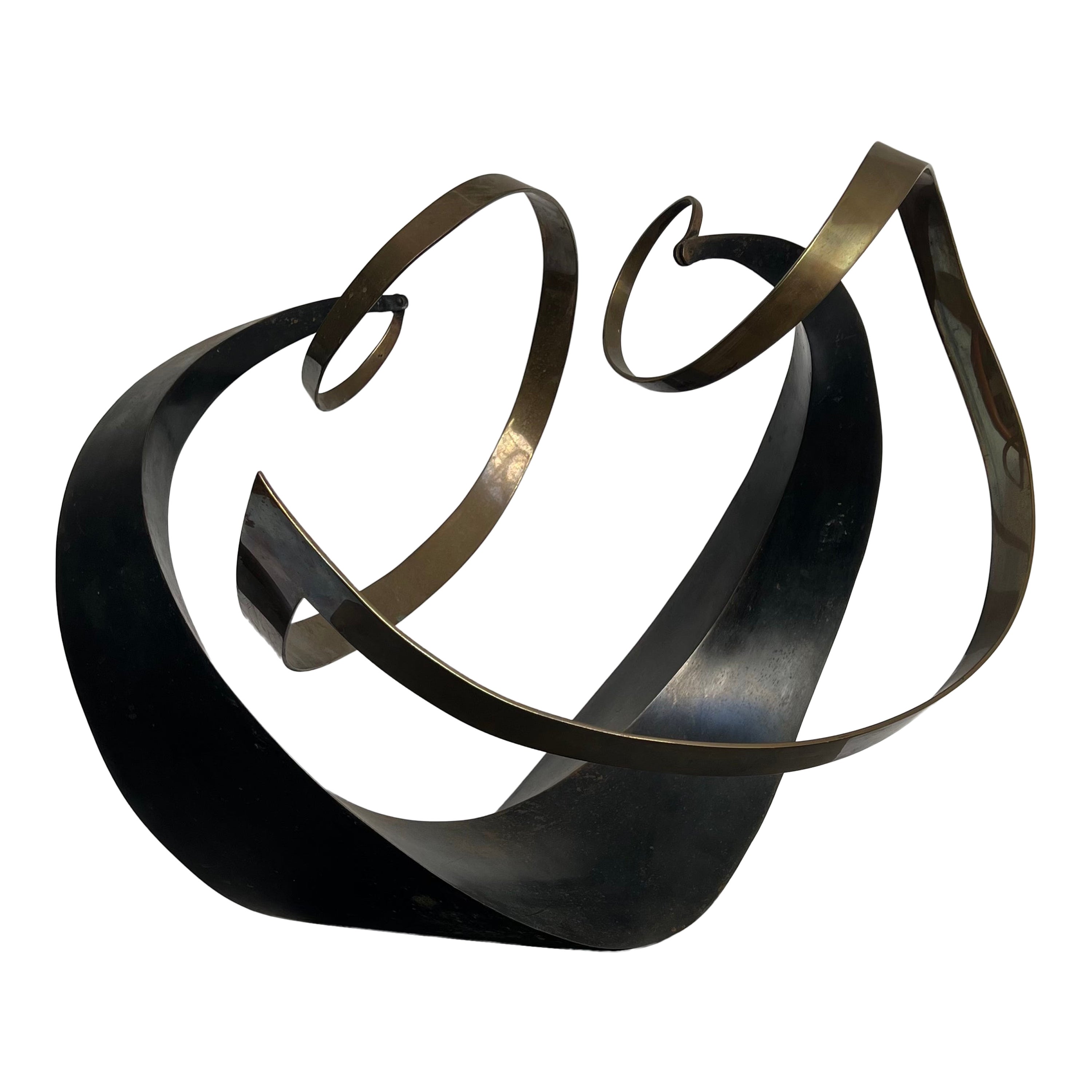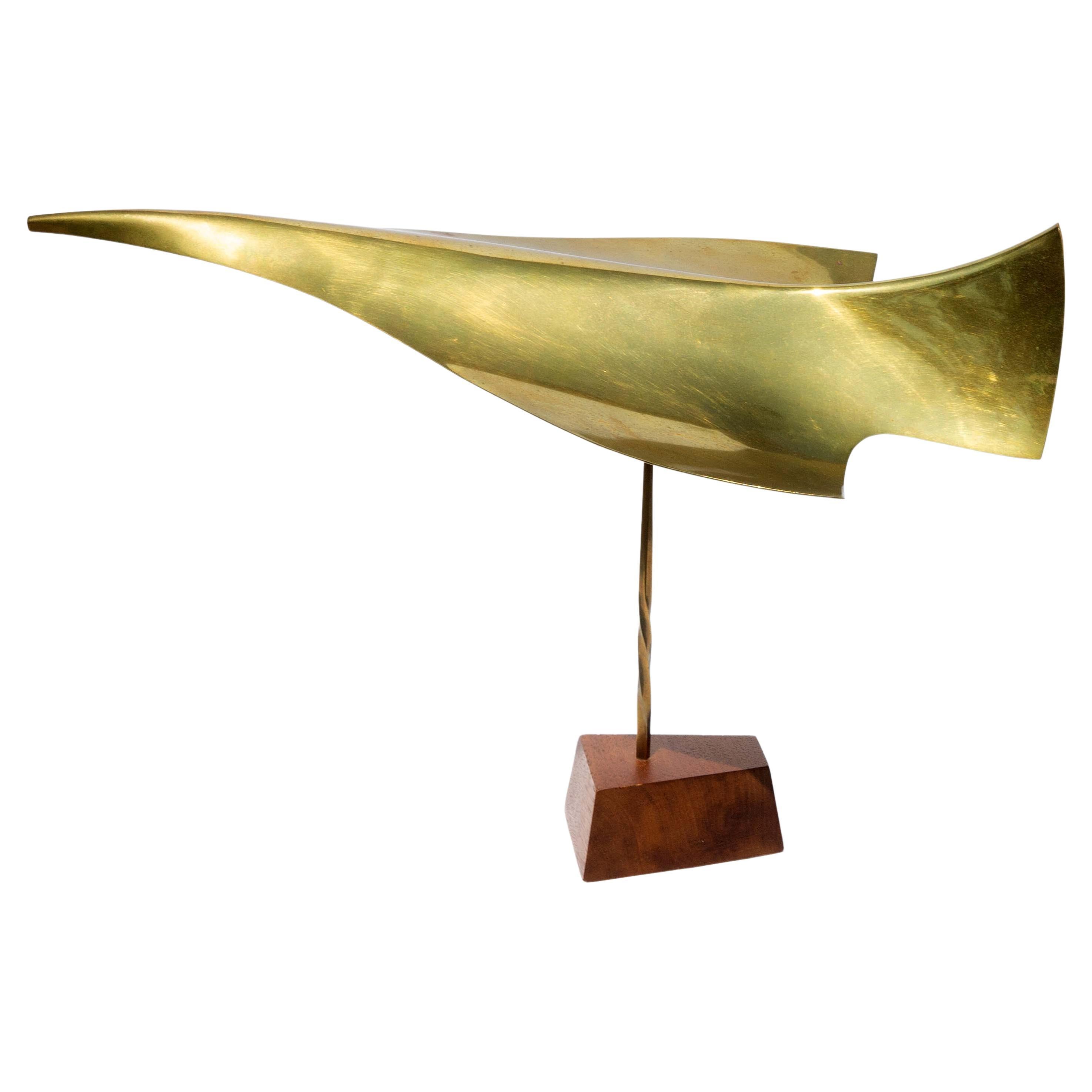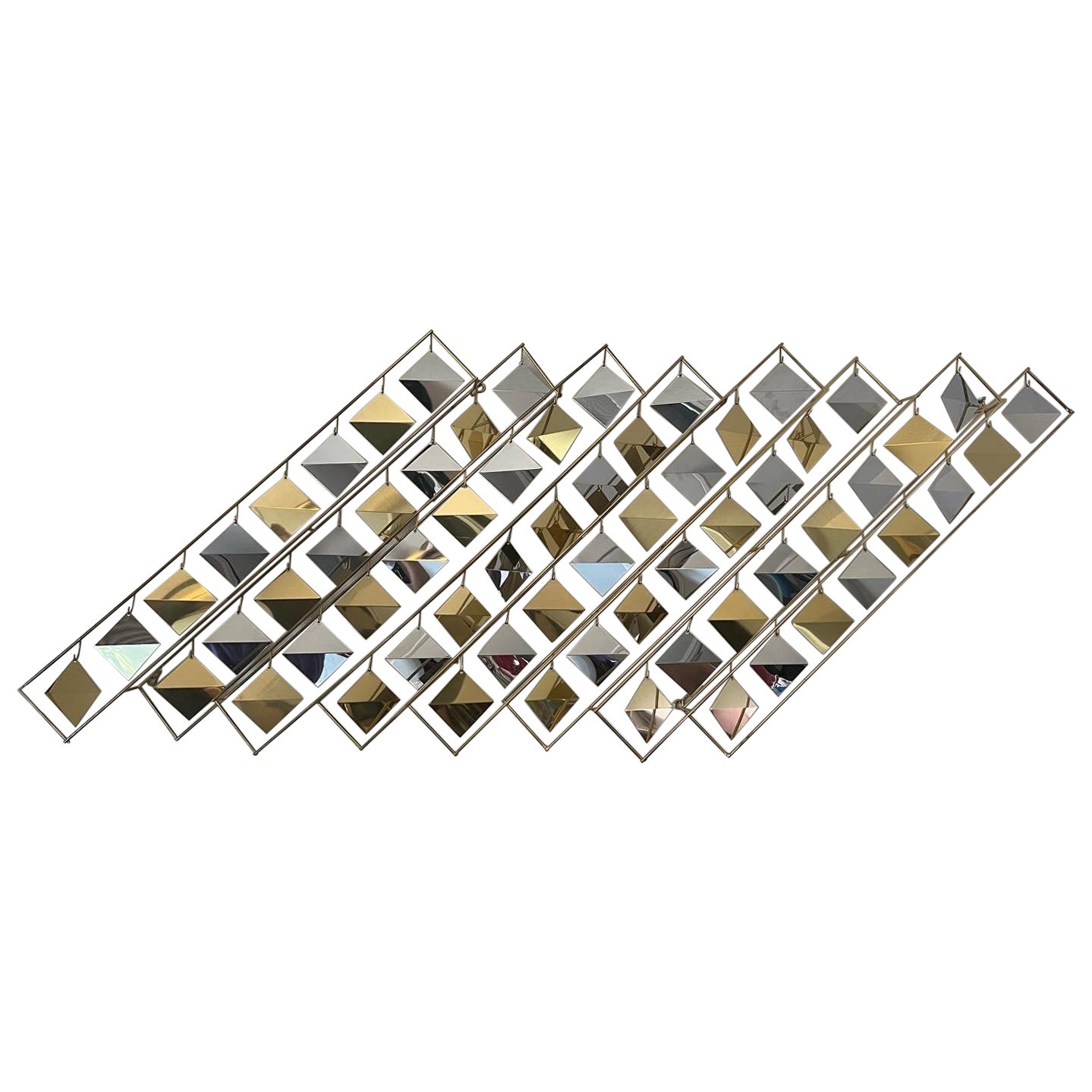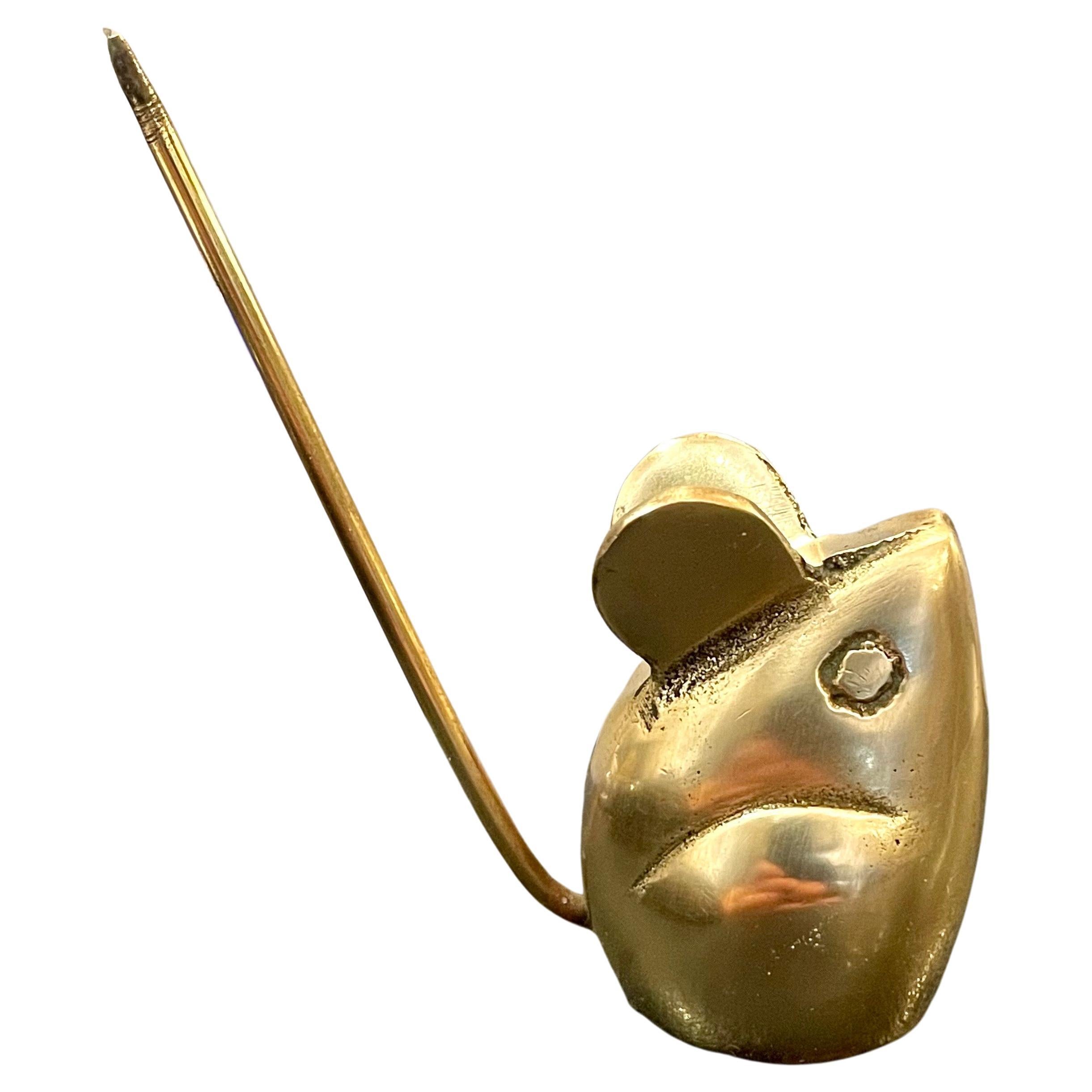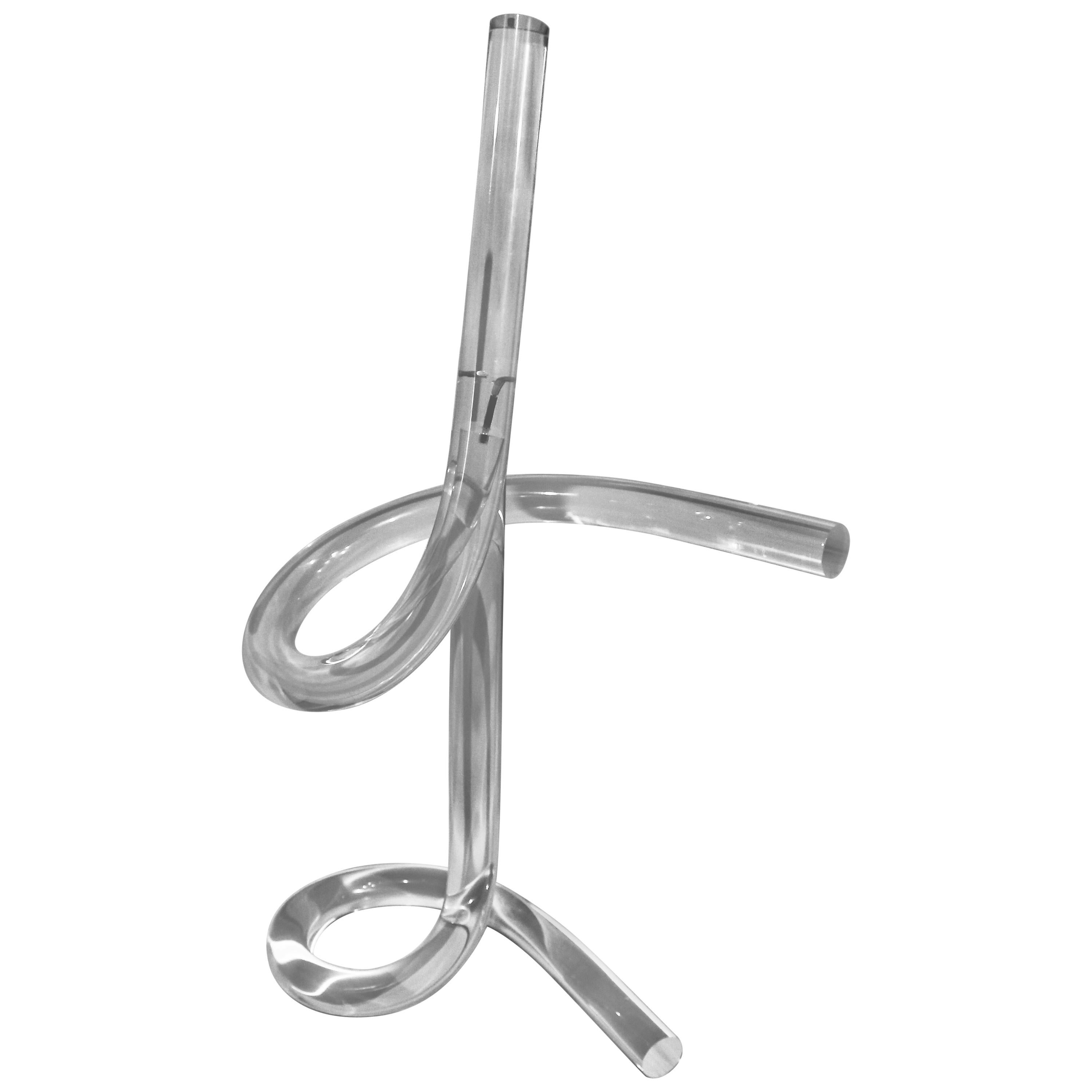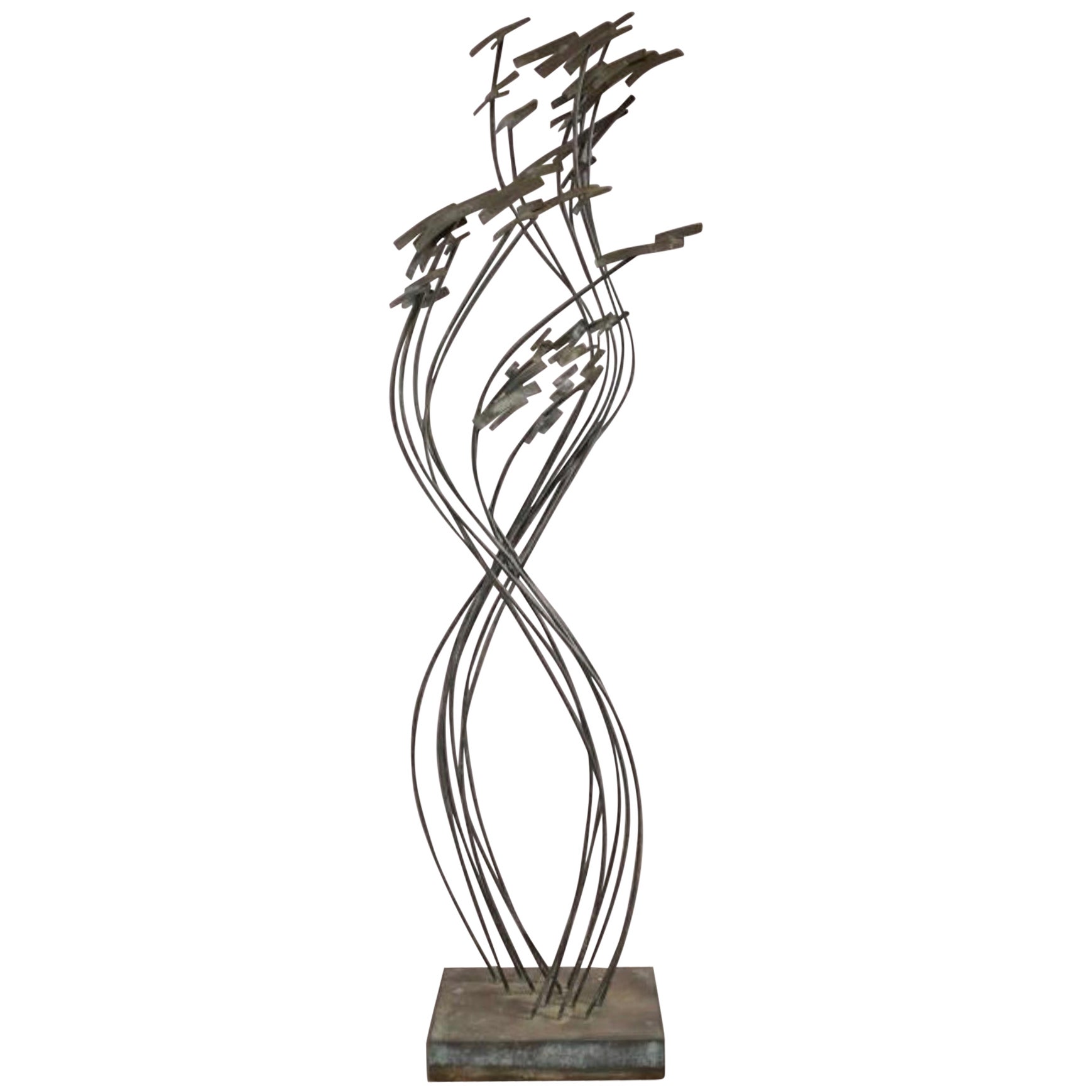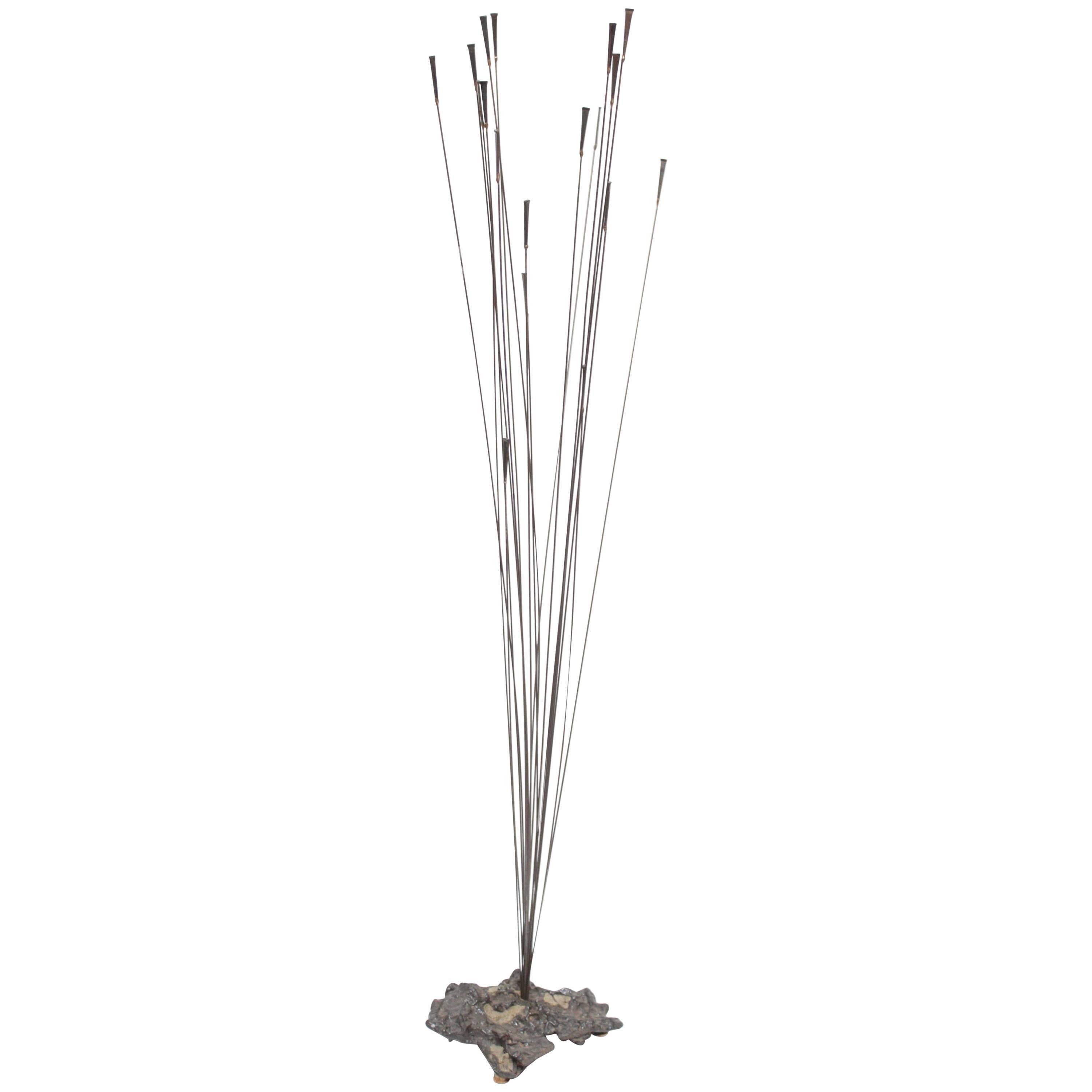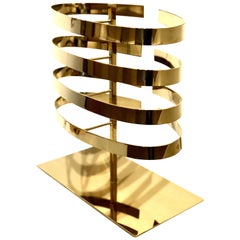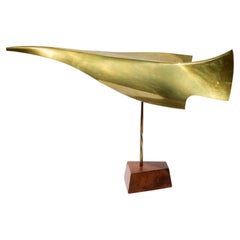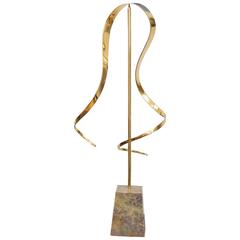
Polished Brass Kinetic Sculpture
View Similar Items
1 of 5
Polished Brass Kinetic Sculpture
About the Item
- Dimensions:Height: 27 in (68.58 cm)Width: 11 in (27.94 cm)Depth: 8 in (20.32 cm)
- Place of Origin:
- Period:
- Date of Manufacture:1960s
- Condition:Wear consistent with age and use. Marble base has some wear.
- Seller Location:San Francisco, CA
- Reference Number:1stDibs: f101901511133455843fs
You May Also Like
- Bronze & Brass Kinetic Brutalist SculptureLocated in Los Angeles, CAIncredible bronze & brass kinetic sculpture with beautiful patina. Sculpture has weight & lightness. It's playful & serious. Checks all the boxes.Category
Vintage 1980s Mobiles and Kinetic Sculptures
MaterialsBronze, Brass
- Contemporary Solid Polished Brass SculptureLocated in San Diego, CALarge contemporary polished solid brass sculpture unknown designer, can be used for jewelry display circa 2000 nice clean condition no scratches.Category
Late 20th Century American Mid-Century Modern Abstract Sculptures
MaterialsBrass
- Hans Christensen Hammered Brass Mobile Kinetic Sculpture "Flight"Located in Rochester, NYHand made modern brass sculpture "Flight" by Hans-Jorgen Thorvald Christensen. Circa 1970. Stamped with the artist's monogram. Sculpture balances on a pin point. See last photo of the underneath. The Master craftsman Hans Christensen was a major force in handcrafted silver design in America in the second half of the 20th century. -Leigh Keno Born in Copenhagen in 1924, Hans Christensen became a silversmith at his father's urging; the elder Christensen recognized that his son could pursue his passion for the arts in a highly lucrative industry vital to the contemporary Danish economy. Christensen's career began auspiciously at the most prestigious and successful Danish silversmith, Georg Jensen, where his work was distinguished from the start. In 1944, when he was 20 years old and had spent about 5 years as an apprentice, Christensen completed a tea pot and warmer for his "Journeyman's Piece," a serious test of Christensen's abilities as a silversmith. At the time, apprentice silversmiths who failed to pass the journeyman's examination and performance review were forbidden from working as silversmiths by Danish law. Not only did Christensen pass the examination, but he also received two Silver Medallions for this piece, one for design and one for execution, which were both presented to him personally by King Frederick IX of Denmark. The presentation of two medals to one person was exceedingly rare and had not occurred since the 19th century. After completing his apprenticeship at Jensen, Christensen enrolled in the leading institutions of the industry. He matriculated at the Copenhagen School of Arts and Crafts in 1949, the Technical Society for Advanced Silversmiths in 1951, and the School for Arts and Crafts in Oslo, Norway, in 1952. Upon finishing his studies, Christensen returned to Jensen. From 1952 to 1954, he was the lead silversmith and head of the prototype department, and was amongst the youngest department heads at the Jensen works. As part of his responsibilities for this position, he directed the silver smithing section at the S.A.C. in Copenhagen. During this second stint at Jensen, he collaborated personally with a number of Jensen designers, such as Jorgen Jensen (son of Georg), Sigvard Bernadotte (a member of the Swedish royal family), Arno Malinowski, Ole Bent Petersen, Magnus Stephenson (an award-winning architect), and Henning Koppel. Hans Christensen personally made the first of the famous Henning Koppel water pitchers, designated as "Number 992," which was introduced in 1952. The piece was undisputedly beautiful to behold at rest and a tribute to both the designer and the silver smith's perseverance, but Christensen knew it had shortcomings as well. Yet Christensen was unable to further design for the water pitcher until after the expiration of his contract with Jensen, which had previously prevented from him from designing silver in the States. Having worked in the prototype shop in the development of the pitcher, Christensen was well aware of the pitcher's intimate details, its contours, and its functional properties, and thus well-aware of what could be improved. The pitcher's handle was cold to the touch, and while it was graceful it could be somewhat uncomfortable in the server's hand when filled with 6-8 pounds of water; its contours needed to be changed. Most importantly to Christensen (and more frequently than anyone wanted to admit), ice as well as water would often spill out of the spout, creating an annoyance for the diner. Christensen resolved the former issue by simply adding a comfortable, rich, warm walnut handle. In order to solve the latter issue, Christensen needed to think scientifically - he reasoned that if ice were directed through the neck of the pitcher to a position higher and away from the spout, there would be no more unfortunate spills, and the price of ownership of the pitcher could be persevered. In 1952, an exhibition of George Jensen silver was mounted at the Museum of Modern Art in New York. Christensen, who made 80% of the designs in this show at Jensen's prototype shop, was sent to the museum to represent the company. It was at this exhibit that he was introduced to the American Crafts movement, and was urged by Amy Vanderbilt Webb to emigrate to the U.S. to teach at the School of Arts and Crafts in New York. After two years of letters from Ms. Webb, Senator Kenneth Keating of New York, and Harold Brennan, Director of the School of Arts and Crafts, Christensen moved to America in 1954. Though he was prevented from designing silver products outside of Jensen because of the conditions of his employment contract, the opportunities to designing automobiles and various consumer goods helped to persuade him. He also took a position at the School of Arts and Crafts in New York. Christensen's innovation continued after his move to the United States. In 1958, his sterling coffee service...Category
Mid-20th Century American Mid-Century Modern Mobiles and Kinetic Sculptures
MaterialsBrass
- C. Jeré brass and chrome kinetic sculpture wall artBy Artisan House, Curtis Jeré, C. Jeré Artisan HouseLocated in Phoenix, AZC. Jeré uncommon kinetic brass and chrome wall sculpture. It’s made of a brass frame with two separate parts that connect or can be displayed separately. It can also be positioned offset (not pictured). Polished brass and chrome bent diamonds hang on hooks. These can slightly move under a fan or if touched, providing movement and an op art sparkling...Category
Vintage 1980s American Post-Modern Mobiles and Kinetic Sculptures
MaterialsBrass, Chrome
- Solid Marble Kinetic SculptureLocated in Palm Springs, CAAn amazing solid Kinetic marble sculpture from the 1970s. We are not sure on who designed this. The sculpture is in two sections you are able to rotate the top section 360 degrees. ...Category
Vintage 1970s Unknown Modern Abstract Sculptures
MaterialsMarble
- Minimalist Lucite Kinetic SculptureLocated in Hamilton, OntarioMinimalist Lucite sculpture signed Amidie.Category
20th Century Minimalist Mobiles and Kinetic Sculptures
MaterialsLucite
$795 Sale Price36% Off
